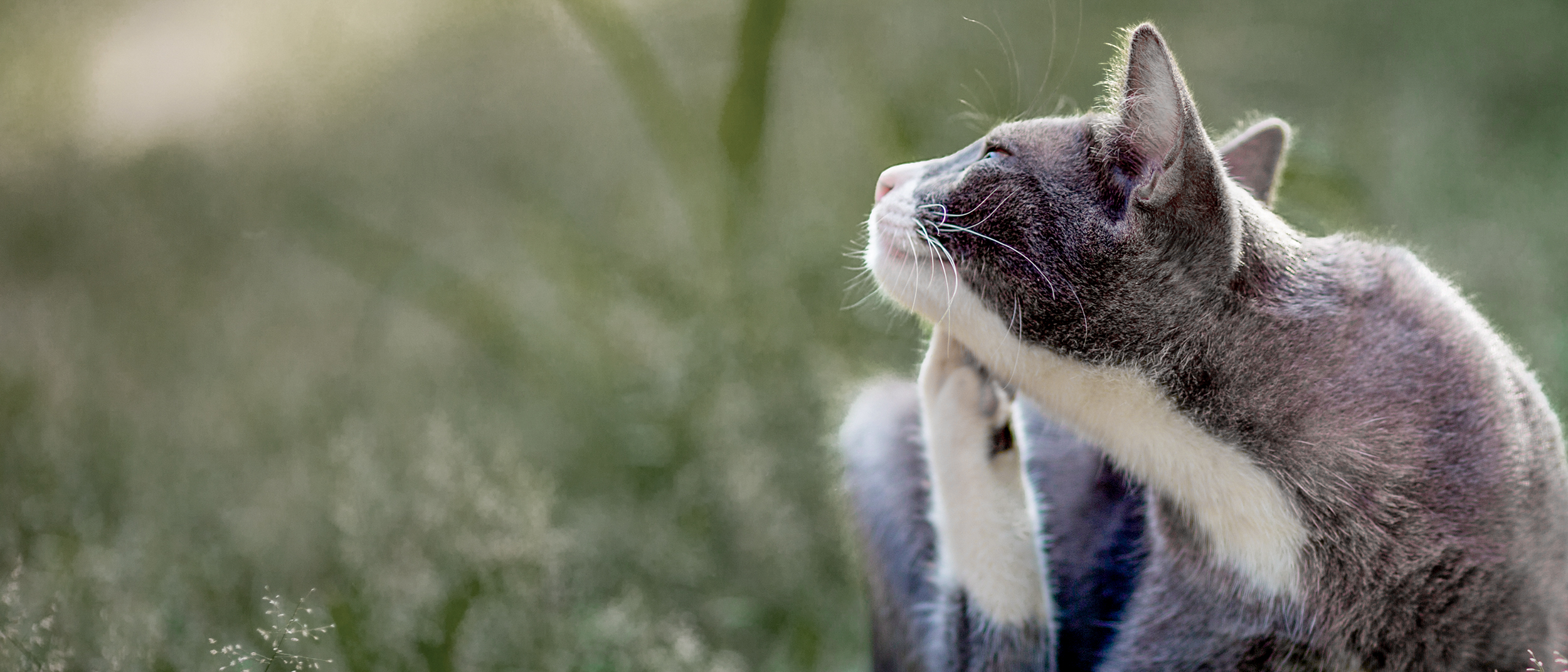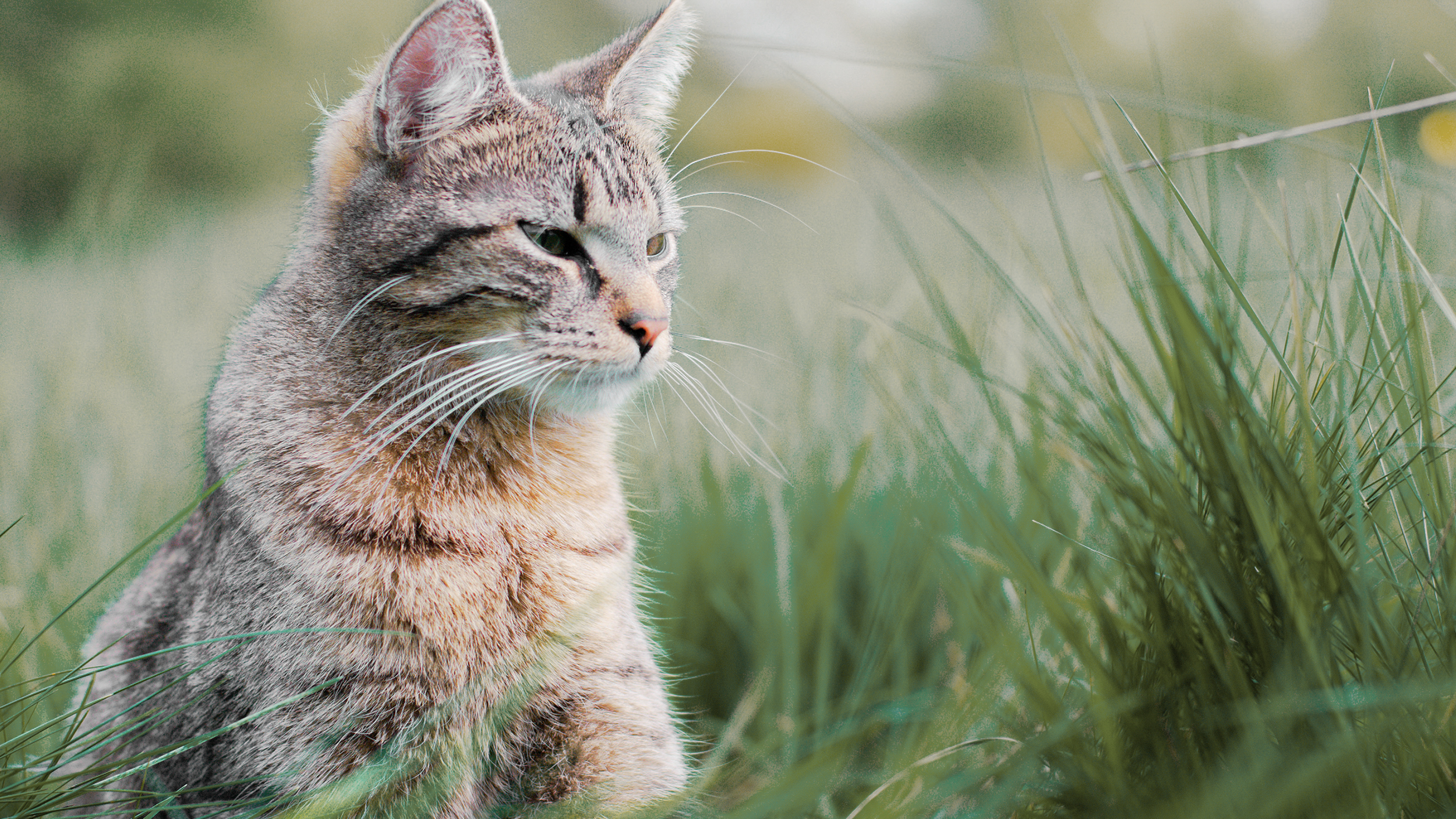Cat skin allergies
Article

Like humans, cats can suffer from allergies and the uncomfortable symptoms of a reaction. Although allergies can be treated, working out what’s causing your cat’s allergy can be tricky and requires help from your vet.
Symptoms of allergies in cats
Your cat’s skin is the biggest indicator of whether they are suffering from an allergy. When you stroke your cat, you may feel little scabs; you may also notice broad, relatively flat areas on their skin which are red or appear inflamed, or lesions on their face, abdomen or the outside of their thighs. Cats with allergies scratch and itch frequently, sometimes to excess, and may also over-groom themselves in an effort to alleviate any discomfort. The result can be patches of eroded hair, hair that breaks easily or hair loss.
Why is a cat’s allergy so difficult to determine?
There are three main causes of a cat’s allergy: fleas, something in their diet, and allergens in their environment. Determining which of these is causing an allergic reaction is difficult, and your vet will have to undertake a process of elimination to work out which of these is causing the symptoms in your cat.
What will the vet do to identify my cat’s allergy?
The first thing your vet will do is establish whether there is any cause of your cat’s symptoms, other than an allergic reaction. Many of the symptoms a cat with allergies exhibits are similar to those caused by parasitic infection, fungal infection – such as ringworm – and even behavioural problems. All of these will need to be ruled out by your vet before starting to work on the allergy.
Your vet will then treat your cat for fleas. Cats can develop hypersensitivity to flea bites which results in them scratching vigorously and causing scabs or lesions. Your vet will ask you to use a strong anti-flea treatment and to de-flea any other animals in your household, as well as taking other precautions such as regularly cleaning your cat’s environment.

If your cat is still having an allergic reaction after this treatment, your vet may try to rule out any food allergies by placing them on an exclusion diet. This lasts for around eight weeks, during which time if your cat’s symptoms disappear, the vet will then give your cat their original food; if the symptoms reappear, they’ll conclude it’s sensitive to an element of this diet.
If the exclusion diet process is unsuccessful, it’s likely your cat is suffering from an allergy that requires prescription medicine.
The impact of diet on your cat’s allergy
Your cat’s diet directly affects their skin, the largest organ in their body. A food designed specifically for cats with hypersensitive skin can help limit any adverse reactions to food and support them in developing good skin health.
These foods have specially-chosen protein and carbohydrates that are less likely to cause an allergic reaction in your cat; ones that are highly-digestible and may not be commonly used in most manufactured food. The food may also include omega 3 long chain fatty acids, which help manage any skin reactions (such as inflammation) and biotin, niacin and panthothenic acids – these help prevent your cat’s skin drying out and strengthens its ability to protect them against irritants.
If you notice any of the symptoms of an allergic reaction in your cat, make sure to visit your local vet. Together, you’ll be able to work out how to support your cat’s health and improve the quality of their fur and skin.
Related Articles

Find a vet
If you have any concerns about your cat’s health, consult a vet for professional advice.
Like & share this page